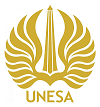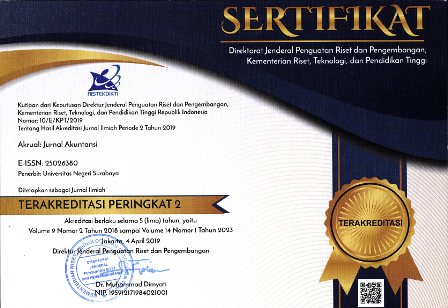Membangun Human Capital Melalui Kepemimpinan Dan Komitmen Organisasi
DOI:
https://doi.org/10.26740/jaj.v2n2.p217-232Keywords:
Human capital, leadership, organizational commitmentAbstract
Abstract
Every company is constructed through two kinds of capital, which is financial capital and intellectual capital. If the company's capital is described as a tree, the human capital, an essential part of intellectual capital, is the resin. Resin allows the tree grows, and only the human capital that enables organizations to grow and develop. Considering the strategic position of human capital, it is a compulsion for a company to develop it. The problem is how to build human capital effectively? This study aimed to identify the factors that determine the development of human capital in an organization. There are 2 (two) major factors that hypothetically influence human capital, which is leadership and organizational commitment. Leadership does not directly affect human capital. Leadership influence human capital through organizational commitment. In other words, organizational commitment is an intervening variable for the relationship or the influence of leadership on human capital. This hypothesis is based on a 'fact' that the function of leadership is oriented and intended to obtain or build the commitment of each personnel. Only committed personnel will provide their best for the organization. Only through the best contributions of every personnel, human capital can be built and developed. Leadership is useless if it can not obtain and create commitment. Personnel are useless, no matter how many and how skilfull they are, if they do not contribute the best for the organization. The presence of personnel without their comitment will be the same with their absence; even they may actually be detrimental to the organization.
References
Allen and Meyer, 2001, A Three Component Conceptualization of Organizational Commitment, Human Resources Management Review, Vol.1, No.1, 1991 pp. 61-89 https://doi.org/10.1016/1053-4822(91)90011-z
Edvinsson, L., dan Malone, M.S., 1997, Intellectual Capital: Realizing Your Companys True Value by Finding its Hidden Brain Power, New York: Harper Business.
Greenberg, J., and Baron, A.B. 2003. Behavior in Organization. 8th Ed. NJ: Prentice Hall.
Kaplan, R.S, dan David P.N., 1996, The Balanced Scorecard: Translating Strategy into Action, Massachusetts: Harvard Business School Press.
Nahapiet, J. dan S. Ghoshal, 1998, Social Capital, Intellectual Capital, and the Organizational Advantage, Academy of Management Review, 1998, Vol. 23, NO. 2: 243-266. https://doi.org/10.5465/amr.1998.533225
Northouse, Peter G. 2004. Leadership: Theory and Practice. 3td Ed, Sage Publications, Inc.
Olve, N.G., J. Roy, dan M. Wetter, 1999, Performance Drivers: A Practical Guide to Using the Balanced Scorecard, John Wiley & Sons.
Porter, L.W., et al., 1974, Organizational Commitment, Job Satisfaction, and Turnover among Psychiatric Technician, Journal of Applied Psychology, No, 59: 603-609. https://doi.org/10.1037/h0037335
Porter, M.E., 1993, Competitive Advantage, Collier Macmillan Publishers.
Robbins, S.P., 1990, Organization Theory: Structure, Design, and Applications, 3td Ed, New Jersey: Prentice-Hall, Inc.
Robbins, P Stephen, Judge, A Timothy, 2008, Essentials of Organizational Behavior, 9th edition, Pearson Prentice Hall, England.
Schermerhorn, Hunt, dan Osborn, 1995, Basic Organizational Behavior, John Wiley & Sons
Stewart, Th. A, 1997, Intellectual Capital, London: Nicholas Brealy Publishing.
Sveiby, K.E., 1998, Intellectual Capital: Thingking Ahead, Australian CPA, June: 18-21.
Ulrich, D., 1998, Intellectual Capital = Competence x Commitment, Sloan Management Rewiew, Winter 1998: 15 - 26.
Walker, Diana Ch., 2001, Exploring the Human Capital Contribution to Productivity, Profitability, and the Market Evaluation of the Firm, Dissertation, Webster University.
Downloads
Published
How to Cite
Issue
Section
 Abstract views: 674
,
Abstract views: 674
, PDF Downloads: 500
PDF Downloads: 500


















